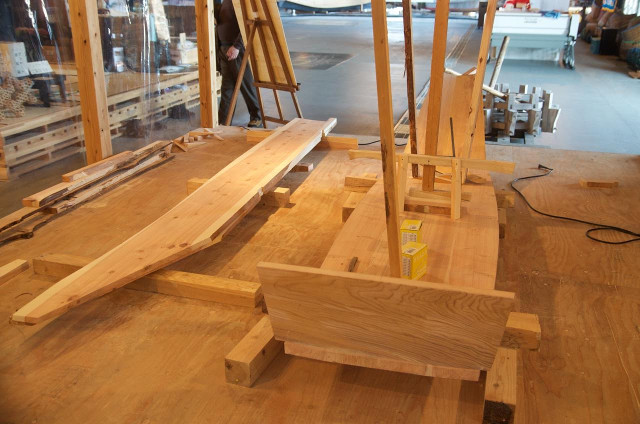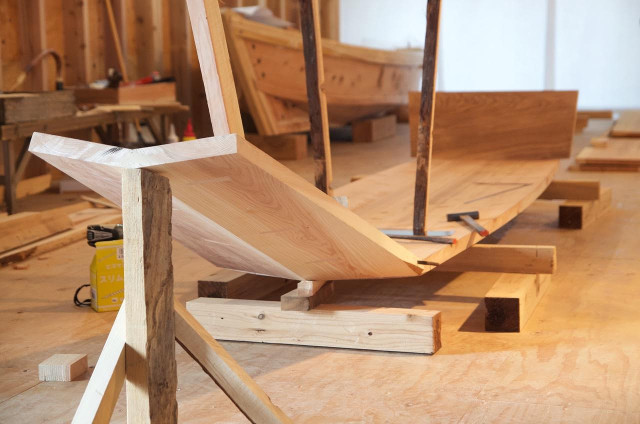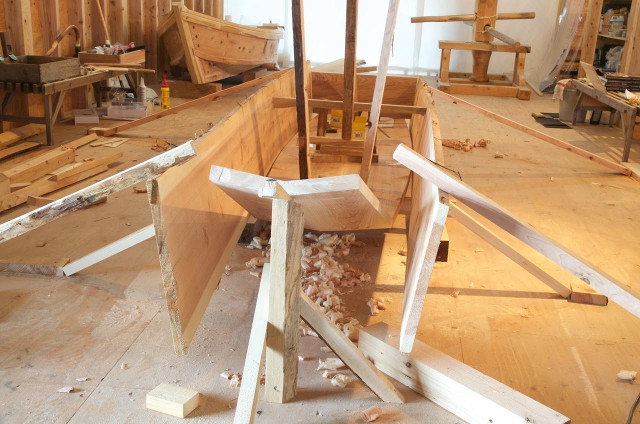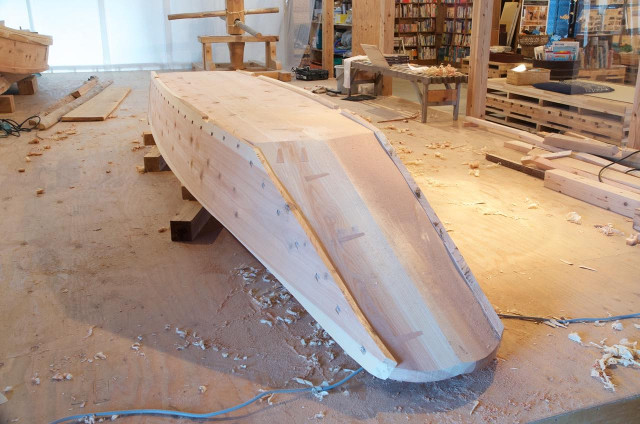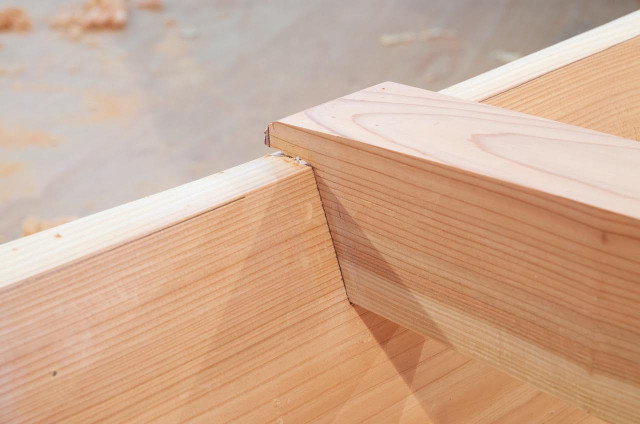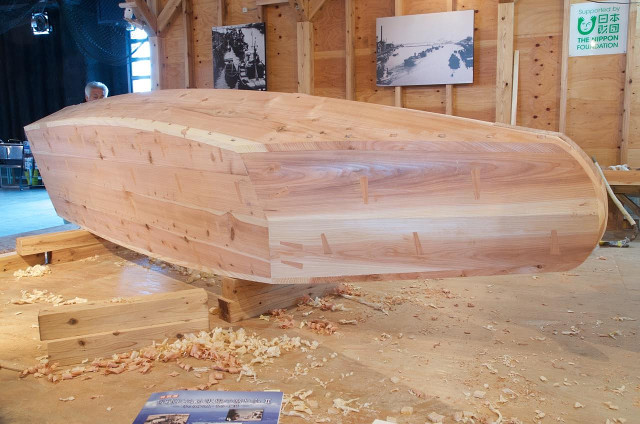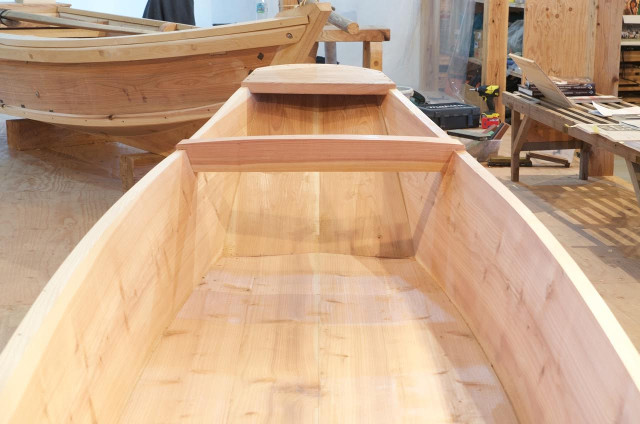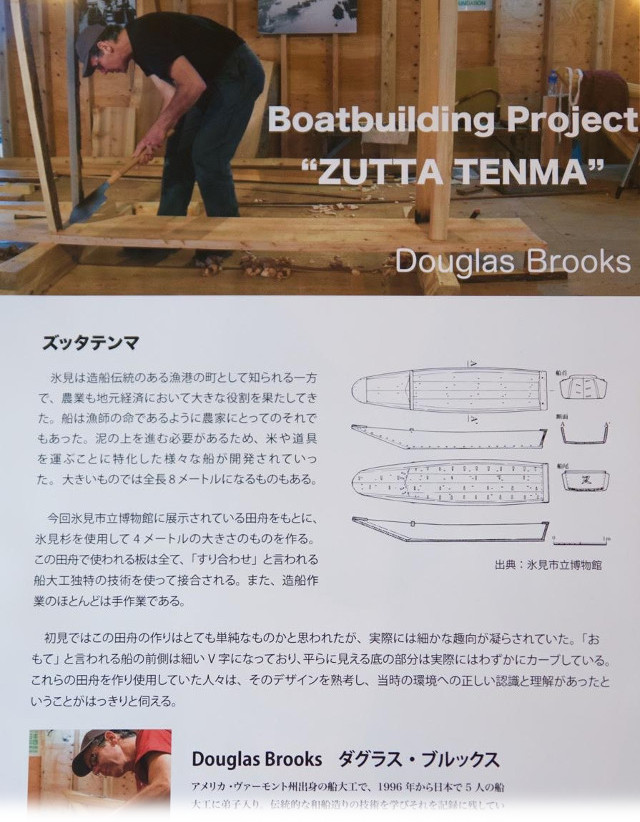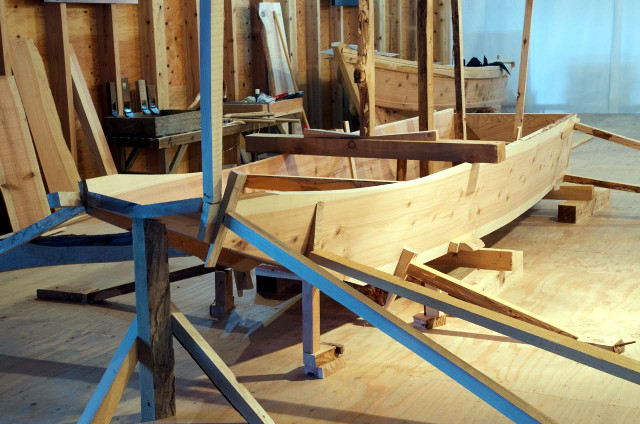Zutta Tenma
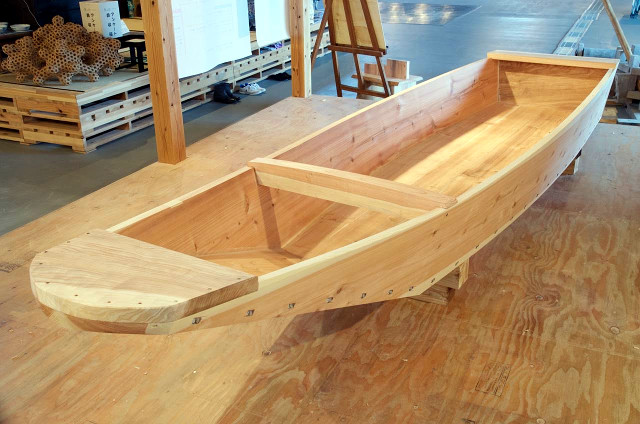
In March of 2016 I built a small boat as an exhibition for himming.jp, a waterfront NPO located in Himi, Toyama Prefecture, Japan. I replicated a boat from the collection of the Himi Museum, a type once used in the extensive rice fields that surrounded the town. These boats were called zutta tenma. Tenmasen, or tenma, is a very common name for a small working boat in Japan. "Zutta" in the local dialect means to slide, referring to the need to slide these boats across the mud of the rice paddy.
Himi's rice paddies were so large they were connected by a series of waterways, therefore the rice harvest was carried by boats. There were three main sizes of zutta tenma and the one I built was among the smallest, five meters in length. The largest were eight meters. They all featured a slightly peaked, pram bow. In examining the boat at the museum I discovered some interesting construction details. The bottom is very slightly curved at the transom and the planks do not overlap the edges of the transom as in most boats. Instead the transom lays on the end grain of the side planks and nails are driven through the transom into the plank ends. The only other place I have seen this done is on the boats of Lake Biwa, Japan. Internal framing consists of a just a single beam mounted forward. All the material was cedar.
Himi is still an important fishing port and the sea boats built there do not reflect this type of construction. In talking to Himi's last two boatbuilders I learned that sea boats and rice field boats were built by different craftsmen, hence the different styles of construction. In the rest of Japan a rice field "boat" is really not much more than a sled, and too small for a person to ride in. Himi is a rare example of a place where these craft were true boats. Himming.jp launched the boat for their 2016 cherry blossom festival. Their fleet of replica boats traversed the cherry-lined canal that runs through the center of the city.
I blogged about the construction of the boat so for a more detailed description of the process refer to my blog, beginning here: http://blog.douglasbrooksboatbuilding.com/2016/02/himming-npo.html
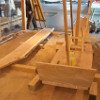
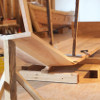


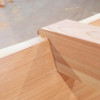
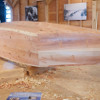
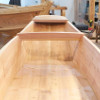
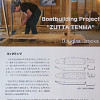
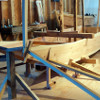
© Copyright Douglas Brooks, 2007 - 2018. All rights reserved

